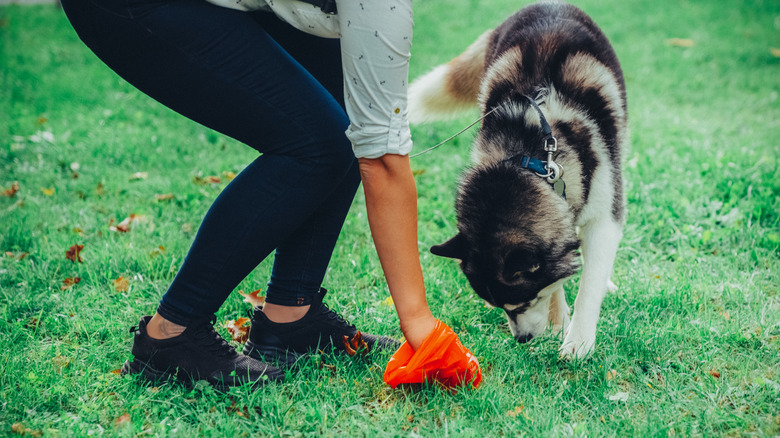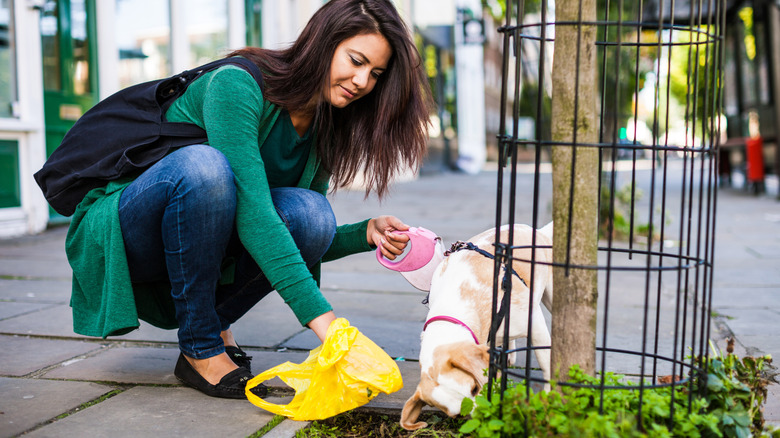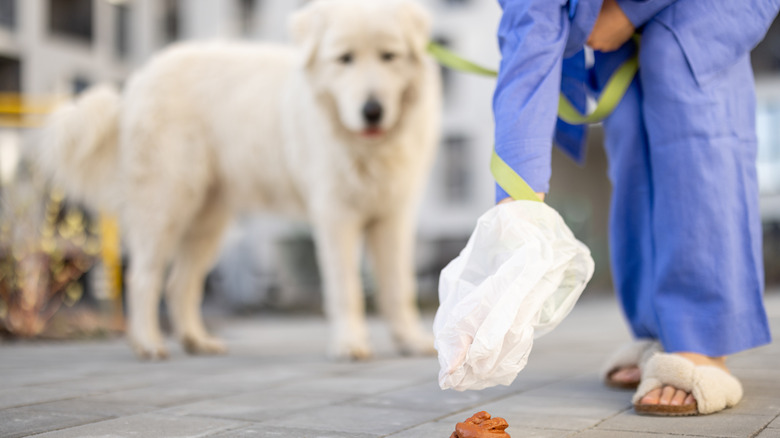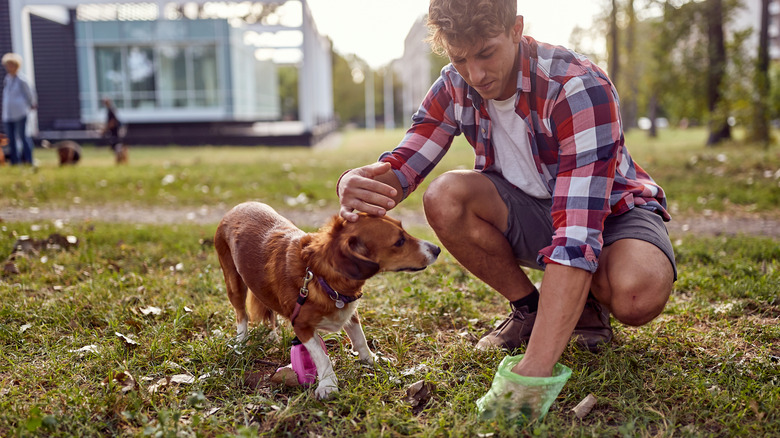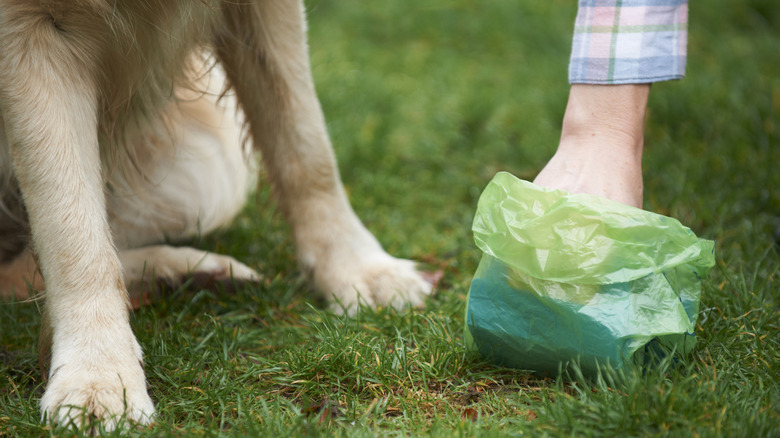5 Red Flags To Look Out For In Your Dog's Poop
While it might not be the prettiest sight, a dog's poop can actually be a helpful indicator of their health. When your pup goes number two, taking a peek at their stool can give you insight to potential problems your dog might be dealing with. There are some red flags you want to look out for in your dog's poop, and if you notice them, it might be time to take a trip to the vet.
If your dog's stool is healthy, it should be firm and brown. A change in color or consistency could alert you that there may be something going on with your dog's health. Along with any physical change to your dog's stool, you should also keep an eye out for blood, mucus, and worms, as these are some of the other red flags you should be conscious of if they are to ever show up in your dog's poop.
Blood
A literal red flag to look out for in your dog's poop is blood. Blood in your dog's stool can have a multitude of different causes. If there is bright red blood in your pup's poop, some factors that could cause it include parasites, inflammatory bowel disease, bacterial infections, and anal sac infections. Dogs can also experience bloody stools due to reasons unrelated to a health condition, such as from stress or trauma to their gastrointestinal tract.
Bright red blood in your pup's stool may indicate some serious problems. Bloody diarrhea is one of the main signs of parvovirus, a serious and highly contagious viral infection that puppies are most prone to. It can also sometimes be a sign of cancer. Since bloody stool can potentially indicate a major problem, it's important to get your dog checked out by a vet as soon as possible if you ever notice it.
Mucus
If you notice your dog's poop looks extra shiny, it could be because of mucus. A small amount of mucus is actually normal in dog poop, as it helps move it along the gastrointestinal tract smoothly. However, you want to keep an eye out if your pup's stool ever seems to contain a lot of this slimy substance. Great quantities of mucus in dog poop is typically caused by something affecting your pooch's colon, so watch out for a large amount of clear or yellow mucus in their stool.
Some of the causes of larger amounts of mucus in dog poop include irritable bowel syndrome, inflammatory bowel disease, parasites, and gastrointestinal infections such as salmonella or parvovirus. In more severe circumstances, extreme amounts of mucus can be caused by cancer in the gastrointestinal tract. Seek veterinary care if your dog is producing a lot of mucus in their stools.
Change in color
If you notice your pup's poop isn't a normal shade of brown, this could mean there's a problem. If it looks darker than usual, maybe even black, this could be a sign that something underlying is going on. Oftentimes, when a dog's poop is dark, they have what's called melena, which means there's blood in their stool from their upper gastrointestinal tract. However, there are many possible reasons a dog's poop may appear this way, including intestinal parasites, inflammatory disorders, kidney failure, liver disease, and pancreatitis. In some cases, it could also be a sign of cancer.
Along with a dark stool, you should also be wary if your dog ever has colorful poop. If your dog's stool is ever yellow, it's possible they are experiencing some sort of liver problem. A random greenish poop usually isn't a cause for concern, as it could just mean your dog ate some grass, but frequent green stools might indicate that something is wrong with the gallbladder. If your pup's poop ever appears to be a greasy white or gray color, they could be experiencing a gallbladder or pancreas problem. Consult a vet if your dog's poop ever changes color.
Change in consistency and shape
The consistency and shape of your dog's poop can also tell you a lot about their health. Healthy dog poop should be firm, however you don't want it to be too hard. If your dog's poop feels extra hard, it could mean they are dehydrated. On the flip side, maybe your dog's poop shows no firmness or shape, also known as diarrhea. Diarrhea can happen for a lot of different reasons, and a lot of the time it doesn't indicate a major health concern and is usually caused by GI upset. However, occasionally diarrhea may be the cause of serious issues such as cancer or kidney or liver disease.
You should also keep an eye on the shape of your dog's stool. Healthy dog poop should be shaped like a log. If your dog ever poops small pellets, this could mean they are constipated and dehydrated. If your dog's stool is ever not in a healthy and firm log form, it may be best to take them to the vet to be checked out for any potential issues.
Worms
Another red flag to watch out for in your dog's poop is worms. While there are multiple types of worms a dog can get, such as hookworms, roundworms, and whipworms, the main type of worm you will notice in a dog's poop is tapeworms. Tapeworms are usually the only worm you can actually see in your dog's stool, while the other types will only be visible if your dog has a very large amount of them.
When a dog has tapeworms, their poop will typically have small flecks of white, which are the tapeworms' sheddings. Oftentimes, dogs with tapeworms will appear normal and not show any symptoms, so checking their stool may be one of the only ways to tell if your dog has been affected. Tape worms aren't usually a major cause for concern, but if you notice worms in your dog's poop, you will want to take them to the vet to be put on a dewormer.
